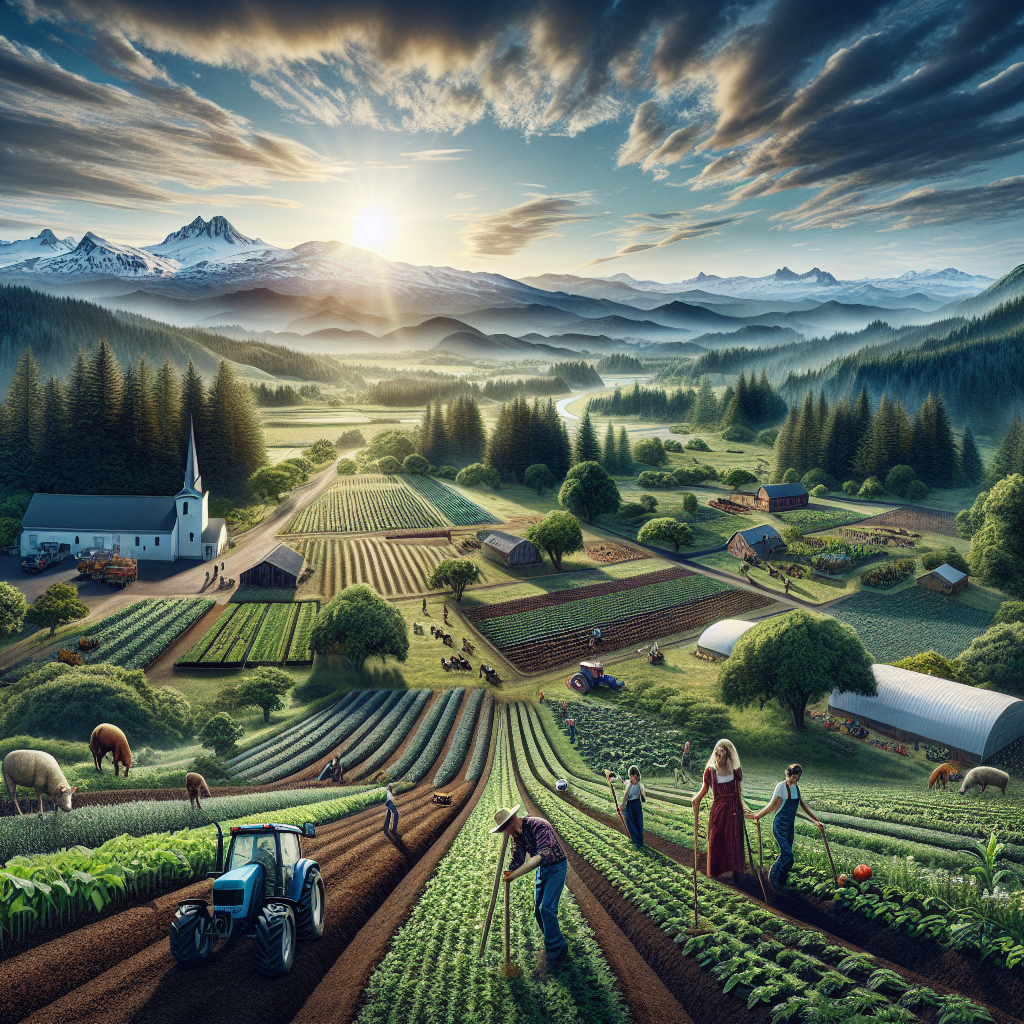Embracing the Soil: The Rise of Regenerative Farming in Oregon
Cascading waterfalls. Majestic mountains. Majestic fir forests. Fertile valleys. With this wealth of natural beauty, it seems fitting that Oregon, “The Beaver State” itself, should be leading the way in a farming revolution. This isn’t your grandpa’s soil-tilling operation – it’s regenerative farming, and it’s taking root right here in our very own back yard.
Roll up the sleeves of your Pendleton flannel, grab a Stumptown coffee, and let’s get knee-deep into this agricultural wonder.
Where The Green Grass Grows: Regenerative Farming Explained
Think of it as giving Mother Nature a hand. Regenerative farming is not just about growing food; it’s about nurturing the soil, increasing biodiversity, and creating an environment where livestock and crops can thrive alike. It’s like having a Snickers at the Saturday Market; you’re not just eating, you’re experiencing something more.

And just like having St. Johns Bridge etched into your forearm, this commitment to the land leaves a lasting mark. This farming approach restores depleted soil, reduces carbon emissions, and improves water retention. If there’s one thing we Oregonians understand, it’s water – living under the gray, drizzling sky of the Pacific Northwest.
The Field Pioneers: Oregon’s Role
Oregon farmers, known for their resilience and innovative spirit, just like our own Blazers, have been early adopters of regenerative farming practices. Why, you ask? The answer is as crisp and refreshing as a pint of Ninkasi. They recognize the crucial role healthy soil plays in their yield. It’s like keeping Powell’s City of Books in business because we understand the importance of a good read on those rainy afternoons.
From the wheat fields of Pendleton to the rolling vineyards of the Willamette Valley, farmers are trading in conventional methods for more sustainable practices. Businesses like Durant Olive Mill, near Newberg, alternate crops to prevent soil depletion, while Azure Standard in Dufur, pioneers organic farming to increase soil fertility. It’s like swapping out your Nike’s for Danner boots – an upgrade that pays back in freshness, health, and taste.
Some Bird Seed for Thought: Bird-Friendly Farming
You don’t have to hike Mount Hood to appreciate our state’s feathered friends. Oregon’s regenerative farmers have found ways to help both crops and birds. Through the incorporation of hedgerows and cover crops, they create habitats for beneficial insects and birds like our state bird, the Western Meadowlark. Biologists at Oregon State University are collaborating with farmers, researching the impact of these practices. It’s like enjoying a Voodoo Doughnut – good for you (well, in a sweet delight kind of way), and great for the local economy!
The Making of a Movement: Next Steps for Regenerative Farming in Oregon
Just as we helped make craft beer a thing of the mainstream, Oregon is shaping the future of farming. Initiatives like the Rogue Farm Corps are training tomorrow’s farmers while organizations like the Oregon Environmental Council are advocating for state policies to support this burgeoning trend.
Oregon: Cultivating a Better Tomorrow
As a morning mist dances off Multnomah Falls, a similar sense of renewal is spreading across the farmlands of Oregon. Regenerative farming is not just a buzzword; it’s a movement, a commitment to the land, and a philosophy that ties us back to the soil under our Chaco-clad feet. For all of the lush greenery and quirky charm that Oregon holds, it’s the spirit of innovation that truly defines us.
So, next time you’re biting into a locally sourced apple from the farmers market, remember the painstaking care taken to produce it – and maybe you’ll develop a deeper appreciation for the hands that feed us and the soil they tend.
Here in Oregon, we don’t only grow crops, we cultivate futures. And as this trend sweeps across our beloved state, it’s hard not to feel a swell of pride, the kind you get when you spot Mount Hood silhouetted against a sunset. So, let’s cherish our land, support our farmers, and look to a healthier, more sustainable future. With that firmly planted, I reckon we’re onto something good. It’s just another day in Paradise, folks. Or should I say, Oregon?
